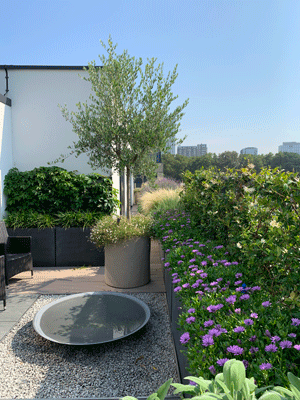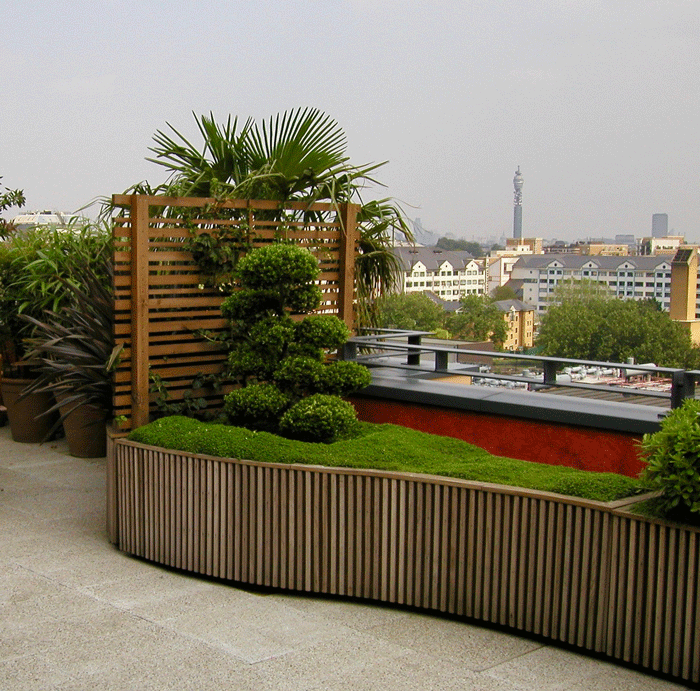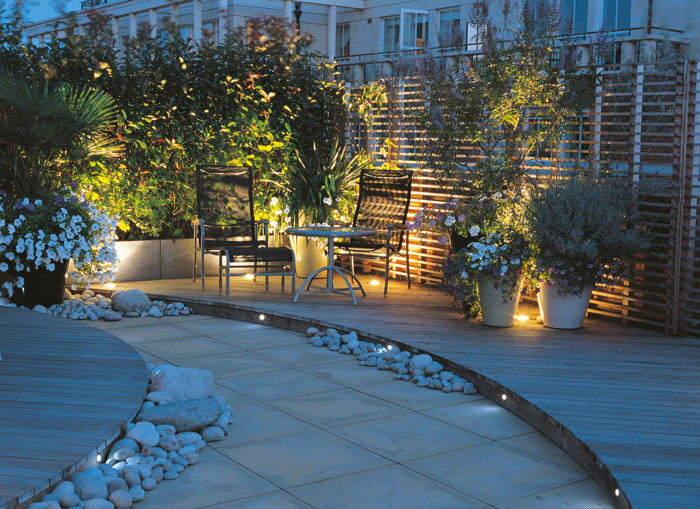How to design the perfect roof garden
 Continuing our series of design features with Bowles & Wyer, here John Wyer looks at how a well designed roof garden can be the perfect extension of your living space.
Continuing our series of design features with Bowles & Wyer, here John Wyer looks at how a well designed roof garden can be the perfect extension of your living space.
John Wyer, of Bowles & Wyer, has been designing and building roof gardens for over 25 years and as he points out, roof gardens can be the most exciting of outdoor spaces, offering a sense of escapism and a chance to see a city from a whole new perspective: “Imagine yourself up on the roof, surrounded by buildings, but somehow slightly removed from the hustle and bustle of life below; scanning the city from your own secret haven,” he says.
Creating a roof garden that can be enjoyed throughout the year requires careful consideration of microclimate, planting and technical aspects such as weight-loading and drainage. Below, John outlines the different aspects you need to consider from structure and shelter to containers and heaters.
STRUCTURE AND SHELTER
 “Think about the environment at roof level. Without the protection of surrounding buildings, rooftops are often windier, wetter or dryer than a domestic garden. On a hot sunny day, an exposed rooftop can be almost unbearable without shade. Pergolas and other vertical structures, such as screens are much more effective at dissipating wind than solid screens such as glass. While shaded areas are important for dining, don’t forget you might want a sunny space for lounging and sunbathing too!”
“Think about the environment at roof level. Without the protection of surrounding buildings, rooftops are often windier, wetter or dryer than a domestic garden. On a hot sunny day, an exposed rooftop can be almost unbearable without shade. Pergolas and other vertical structures, such as screens are much more effective at dissipating wind than solid screens such as glass. While shaded areas are important for dining, don’t forget you might want a sunny space for lounging and sunbathing too!”
PLANTING
 “When choosing plants, bear in mind the environment that the plant originated from. As a general rule, Mediterranean and coastal plants cope well on an exposed, sunny rooftop, as well as plants normally found on rocky south-facing slopes. What characteristics has the plant developed to help it survive in hot, dry and windy conditions? Plants with thick waxy leaves, such as euphorbias, tend to avoid water loss, while hairy leaved plants, such as stachys byzantine, have the ability to block out too much sunlight and avoid drying wind. Silver-leaved plants which reflect the sunlight to avoid drying out are useful and plants with pointy leaves, such as yuccas and pines, which have a much smaller surface area from which to lose water. Lavendar and rosemary are very drought tolerant and a great choice for roof gardens and grasses tend to do well too, but choose the varieties that flourish in cool seasons rather than warm ones. Ideal for rooftop planting and surprisingly hardy are agapanthus, olive and heather.”
“When choosing plants, bear in mind the environment that the plant originated from. As a general rule, Mediterranean and coastal plants cope well on an exposed, sunny rooftop, as well as plants normally found on rocky south-facing slopes. What characteristics has the plant developed to help it survive in hot, dry and windy conditions? Plants with thick waxy leaves, such as euphorbias, tend to avoid water loss, while hairy leaved plants, such as stachys byzantine, have the ability to block out too much sunlight and avoid drying wind. Silver-leaved plants which reflect the sunlight to avoid drying out are useful and plants with pointy leaves, such as yuccas and pines, which have a much smaller surface area from which to lose water. Lavendar and rosemary are very drought tolerant and a great choice for roof gardens and grasses tend to do well too, but choose the varieties that flourish in cool seasons rather than warm ones. Ideal for rooftop planting and surprisingly hardy are agapanthus, olive and heather.”
IRRIGATION AND DRAINAGE
“A roof terrace has a unique micro climate. The combination of increased exposure and the lack of access to groundwater means that plants frequently risk drought. An irrigation system is almost a necessity even if you don’t use it all the time. As important is drainage – all that water needs to go somewhere. Consult an expert because there are different systems you can use for both irrigation and drainage depending on situation and budget.”
SEATING
 (picture above: credit with thanks: Allan Pollok-Morris)
(picture above: credit with thanks: Allan Pollok-Morris)
“Try to avoid bulky furniture which could dominate and feel overwhelming. We often create built-in seating systems for our design schemes. It allows us to make it a central feature of the design and to position it to make the most of any view. We often combine planting with seating, using tall plants in raised beds behind the seating to create atmosphere and provide privacy from neighbouring properties. Whatever style you choose make sure it is strong and stable enough not to blow away!”
CONTAINERS
 “Give some thought to containers as they are an important part of the ‘furniture’ of your outdoor space. Don’t automatically go for terracotta, we often specify fibreglass or powder-coated steel planters in our designs and use ceramic planters for feature trees to add impact. We also commission bespoke containers to make the best use of tight or awkward spaces and create ‘zones’ within the plot. Other materials to consider are lead, zinc, bronze or ceramic. Make sure containers are of sufficient size to stop them blowing over and when placing them make the most of views from important windows by siting containers, specimen plants and even sculpture on the same axis.”
“Give some thought to containers as they are an important part of the ‘furniture’ of your outdoor space. Don’t automatically go for terracotta, we often specify fibreglass or powder-coated steel planters in our designs and use ceramic planters for feature trees to add impact. We also commission bespoke containers to make the best use of tight or awkward spaces and create ‘zones’ within the plot. Other materials to consider are lead, zinc, bronze or ceramic. Make sure containers are of sufficient size to stop them blowing over and when placing them make the most of views from important windows by siting containers, specimen plants and even sculpture on the same axis.”
HEATERS AND FIREPITS
“Heaters and firepits are a focal point to any garden but they are particularly magical on a roof, creating a natural gathering place on cooler evenings and allowing use of the garden well into autumn. We use firepits and heaters fuelled by gel or gas for roof gardens.”
LIGHTING
 “Up on the roof, you can see the sky in a way that almost never happens at street level. As night falls, use lighting to add a sense of depth and shade to a roof terrace, creating dancing patterns of light against the city skyline. Use lighting to pick out key design features such as architectural specimen trees and geometric planters. Lighting will naturally extend the length of time you can enjoy the garden throughout the year.”
“Up on the roof, you can see the sky in a way that almost never happens at street level. As night falls, use lighting to add a sense of depth and shade to a roof terrace, creating dancing patterns of light against the city skyline. Use lighting to pick out key design features such as architectural specimen trees and geometric planters. Lighting will naturally extend the length of time you can enjoy the garden throughout the year.”
Visit the Bowles & Wyer website for more information at: https://www.bowleswyer.co.uk

